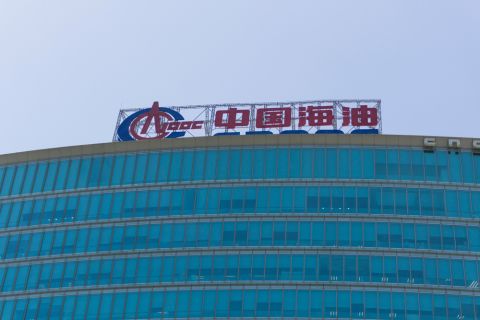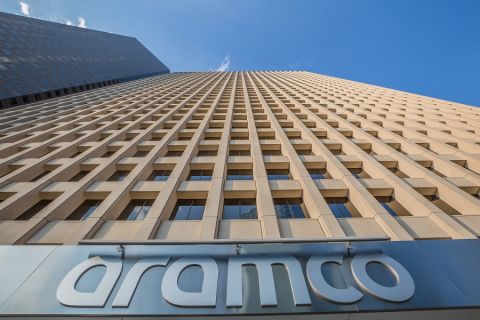While operators have turned up world-class oil fields in Angola and Ghana, the logistically remote and underexplored Republic of Namibia has not been in the spotlight. The country, however, is emerging as a promising deepwater petroleum frontier that could deliver enormous pay. Adding to its appeal, the country’s sedimentary basins are linked to those offshore Brazil, where a series of prolific presalt discoveries has transformed the region into a worldwide reference for this play.
In July 2011, Namibia’s Mines and Energy Minister Isak Katali highlighted the area’s untapped oil potential, confirming that Chariot Oil & Gas had discovered an estimated prospective volume of 11 Bbbl offshore. Katali said the country was in the throes of its largest exploration campaign, one that would see six to eight wells drilled during the next 18 months.
Only 14 exploration wells have been drilled in a 500,000-sq-km (approximate 193,000-sq-mile) area so far. Five of these wells lie in the Kudu gas field, Namibia’s sole commercial hydrocarbon discovery, which has 1.4 Tcf of proved gas reserves with an upside of 20 Tcf.
Brazilian startup HRT Oil & Gas is one of a handful of companies targeting new exploration offshore Namibia, which CEO Marcio Mello maintains is an analog to the Brazilian margin bearing the same source rocks and stratigraphic evolution as the conjugate offshore basins and holds comparable oil potential.
HRT operates 10 exploration blocks and holds a participating interest in two additional blocks in Namibia’s Orange, Walvis, and Namibe basins; these assets cover a 68,800-sq-km (26,564-sq-mile) area offshore.
According to Mello, who worked as a geologist at Petrobras for 24 years and in Angola for three years, the Santos, Esp?rito Santo, and Campos basins comprise one giant petroleum system, which he collectively referred to as the Greater Campos during a technical program at OTC Brasil in October 2011. Recent subsalt finds in ultra-deep formations in the Santos basin in particular reveal “a very thick and rich source rock” related to the petroleum system HRT is currently studying in Namibia’s offshore basins. The OTC session “South America and West Africa: Petroleum Systems and Geological Differences or Similarities” also included talks by Joao Amaral (Total) on presalt plays in the conjugate margins and Webster Mohriak (HRT) on subsalt exploration in Brazil and Angola.
“What kind of correlation can we draw between the oil shows in the Greater Campos and Namibia?” Nilo Azambuja Filho, HRT chief technical officer, asked conference attendees, then explained that when combining datasets from Brazil and West Africa, HRT has identified four definitive oil families in both regions.
“The oil found in Namibia has the same characteristics as the oil families found in Santos basin reservoirs,” he said. These consist of the Marine Deltaic Tertiary, Marine Anoxic Albian-Cenomanian, Lacustrine saline oil type, and Lacustrine brackish/saline oil type.
According to Azambuja Filho, an extensive rifting system that extends from the southern part of South America to West Africa has evolved into a massive deepwater carbonate system where thick salt depositions and similar source rocks can be found in counterpart basins across the South Atlantic realm.
HRT has identified large prospects in three of its offshore blocks. “We think there could be more than 5 Bboe in these unrisked prospects with objectives in the Upper Cretaceous turbidite sandstones, as well as the syn-rift carbonates and sandstones that are analogous to the Tupi and Jupiter fields in southern Brazil,” Azambuja Filho said.
In August 2011, HRT raised its net potential oil resources to 7.9 Bboe following a DeGolyer & MacNaughton study of its offshore Namibia assets. As for the region as a whole, the company has projected as much as 50 Bbbl of recoverable oil.
Chariot has pegged its unrisked prospective resources in eight exploration blocks in the Namibe, L?deritz, and Orange basins at 20 Bbbl (12.5 Bbbl net), according to information published by the company in January 2012.
Both companies plan to invest heavily in exploration efforts in the region in the coming year, with Chariot scheduled to drill its first well, Tapir South, in 2Q 2012 and HRT expected to drill up to four wells through 2012.
Meanwhile, with an additional 9,900 sq km (3,822 sq miles) of 3-D seismic data added at year-end 2011 based on Katali’s estimates, new exploration and the chase for the first world-class oil deposit offshore Namibia continues. The country was expected to close its open licensing system, which was adopted in 1999 and allows international oil companies to apply for acreage at any time, by year-end 2011.

HRT operates 10 exploration blocks (green) and holds a participating interest in an additional two blocks (yellow) in Namibia’s Orange, Walvis, and Namibe basins; these assets cover a 68,800-sq-km (26,564-sq-mile) area offshore. (Image courtesy of HRT Oil & Gas)
Recommended Reading
Sangomar FPSO Arrives Offshore Senegal
2024-02-13 - Woodside’s Sangomar Field on track to start production in mid-2024.
NAPE: Chevron’s Chris Powers Talks Traditional Oil, Gas Role in CCUS
2024-02-12 - Policy, innovation and partnership are among the areas needed to help grow the emerging CCUS sector, a Chevron executive said.
CNOOC Makes 100 MMton Oilfield Discovery in Bohai Sea
2024-03-18 - CNOOC said the Qinhuangdao 27-3 oilfield has been tested to produce approximately 742 bbl/d of oil from a single well.
TPH: Lower 48 to Shed Rigs Through 3Q Before Gas Plays Rebound
2024-03-13 - TPH&Co. analysis shows the Permian Basin will lose rigs near term, but as activity in gassy plays ticks up later this year, the Permian may be headed towards muted activity into 2025.
Proven Volumes at Aramco’s Jafurah Field Jump on New Booking Approach
2024-02-27 - Aramco’s addition of 15 Tcf of gas and 2 Bbbl of condensate brings Jafurah’s proven reserves up to 229 Tcf of gas and 75 Bbbl of condensate.





